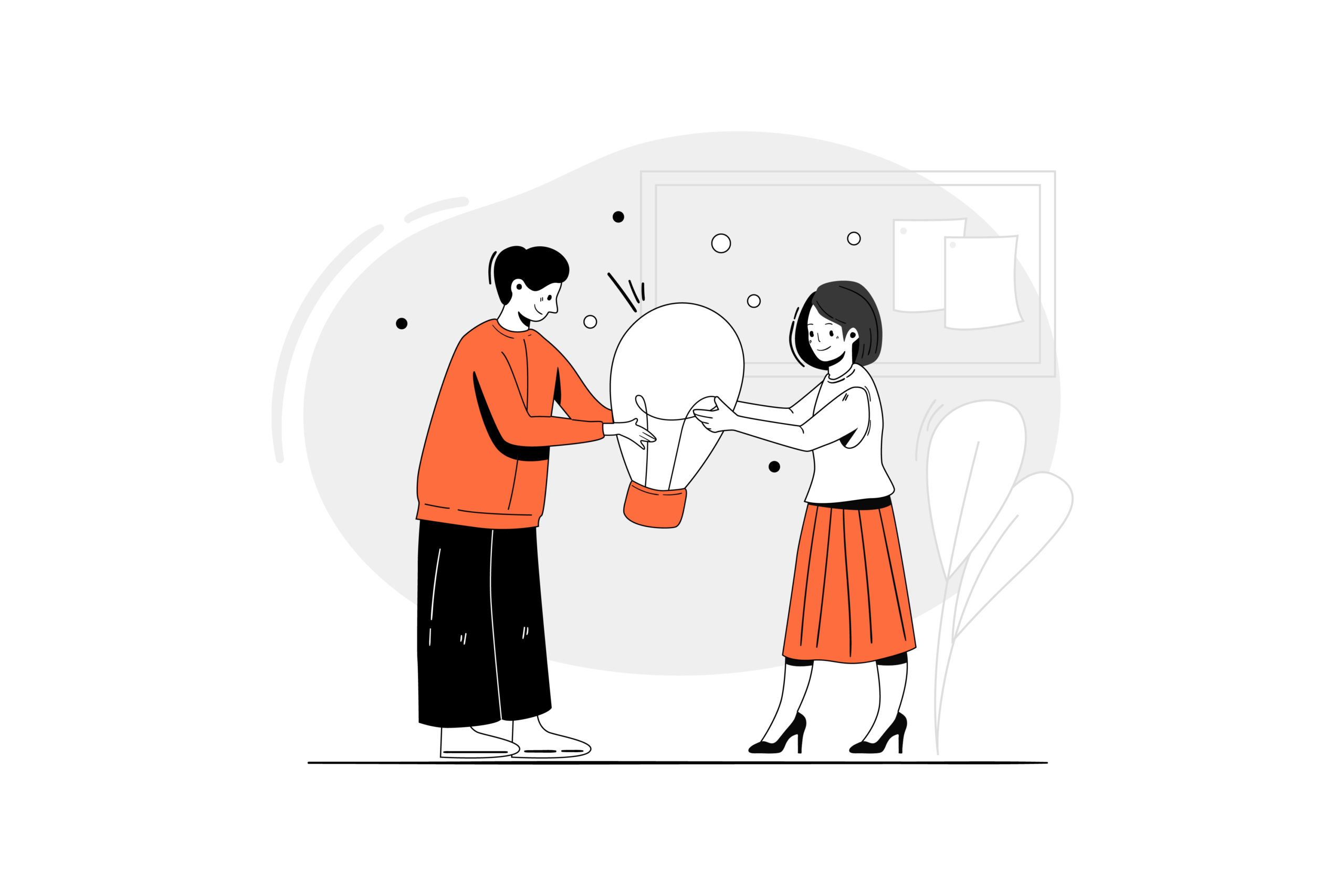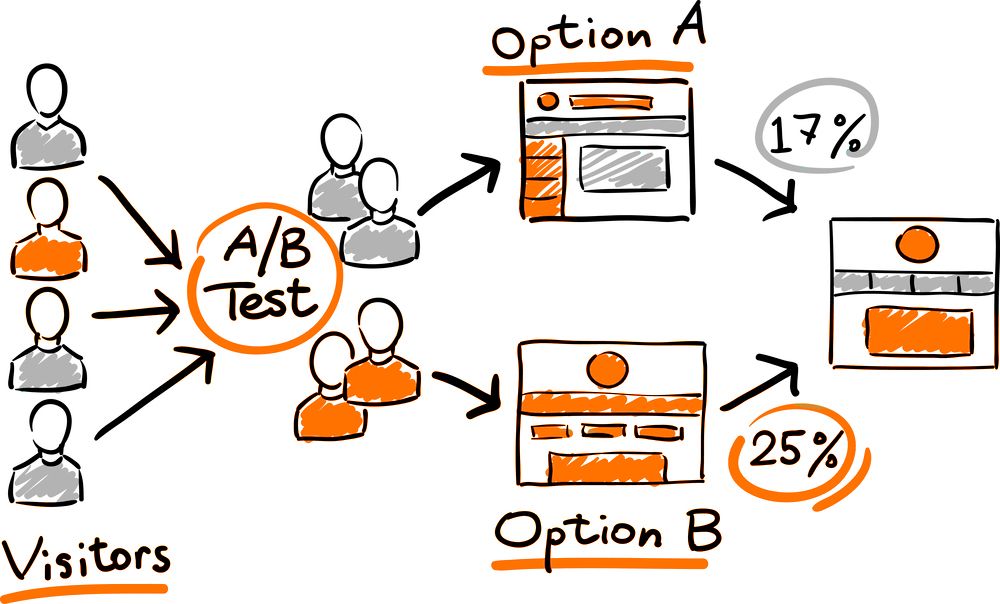Aug 1, 2023 • 2 min read
What is Design Thinking and what is it for?

What is Design Thinking? Simply put, it is a design-based approach that is used to address and solve complex problems. It focuses on deeply understanding the needs of users, generating creative ideas, and applying practical, user-centric solutions. Although it is mainly used in the field of design and innovation, it can be applied to any industry or sector.
What is Design Thinking: examples
- Airbnb: The Airbnb hosting platform was created using the Design Thinking approach. The founders, Brian Chesky and Joe Gebbia, applied empathy to understand the needs and challenges of travelers and hosts. Through the prototyping stage, they created a simple website to offer accommodation in their own apartment. By receiving feedback and improving the concept, they expanded into a global platform that connects people seeking accommodation with those who have space available.
- Apple iPod: The development of Apple’s iPod is another example of what Design Thinking is and how to apply it successfully. Instead of simply adding more features to existing MP3 players, Apple’s design team focused on understanding users’ needs and wants. Using research and prototyping techniques, they developed a device that was elegant, easy to use and offered an intuitive listening experience. The iPod became a resounding success and changed the way people listen to music.
- IDEO Shopping Cart: IDEO, a renowned design and innovation company, applied Design Thinking to reinvent the traditional shopping cart. They observed people as they shopped, gathered information, and generated innovative ideas. Through prototyping and testing, they created a redesigned shopping cart that was more ergonomic, easier to maneuver, and offered additional features such as an integrated scanner for faster checkout. The design was widely praised and has influenced the development of shopping carts in supermarkets and stores around the world.
The 5 stages of the Design Thinking process
What is Design Thinking in terms of process? What are its stages and what does each of them consist of?
(01) Empathize
At this stage, the main goal is to thoroughly understand users. In-depth research is conducted to discover and understand your needs, wants, motivations and challenges. This involves using techniques such as interviews, direct observation, surveys, and data analysis to gain insights and develop empathy with users. The aim is to obtain a deep understanding of their perspectives and experiences, which allows them to identify opportunities for improvement and define the key problems to be addressed.
(02) Define
Once a deep understanding of users has been gained in the empathy stage, it moves on to the definition stage. Here, the information collected is used to synthesize and refine the problem or challenge to be addressed. It seeks to establish a clear and concise problem statement that defines the focus of the Design Thinking process. This stage involves careful interpretation and analysis of the data collected during the empathy stage to identify key points and set goals to be achieved.
(03) Devise
At this stage, it seeks to generate creative ideas and potential solutions to address the problem defined in the previous stage. Divergent thinking is encouraged, i.e., participants are encouraged to generate a wide range of ideas without limitations or judgment. To do this, techniques such as brainstorming, mind maps and lateral thinking techniques are used to generate innovative and unusual options. The aim is to explore different approaches and perspectives to find novel and effective solutions. If someone asks you what Design Thinking is and you answer that a way to generate ideas collaboratively, you are not lying.
(04) Prototyping
Once ideas have been generated in the ideation stage, it moves on to the prototyping stage. Here, tangible representations of the ideas generated are created. Prototypes can be low fidelity, such as sketches, mockups, or visual representations; or high-fidelity, such as functional prototypes that simulate the actual operation of a solution. The goal of prototyping is to materialize ideas in a tangible way to evaluate and test their feasibility. Prototypes allow for early and quick feedback from users and adjustments to be made before significant resources are invested in implementation.
(05) Try
At this stage, prototypes are tested, and feedback is obtained from users. It seeks to evaluate the viability and effectiveness of the proposed solutions. Users interact with the prototypes and data and feedback is collected to assess how their needs and desires are met. The information obtained at this stage is used to iterate and improve solutions. The prototyping and testing process is repeated until an optimal solution is found that meets the objectives established in the definition stage.
Importantly, the Design Thinking process is iterative and non-linear. Stages are not strictly followed in order, and it is common to rewind and revisit previous stages as new information is obtained and adjustments are made. The ultimate goal is to find innovative and user-centered solutions, through iteration and continuous improvement based on user feedback.
What is Design Thinking for in a business context?
In a business context, Design Thinking is used to address innovation challenges and opportunities within the organization. Here are some of its practical applications.
Product and service development
Design Thinking helps companies develop products and services that are aligned with customer needs and wants. By deeply understanding users, opportunities can be identified to create solutions that solve real problems and provide an exceptional experience.
Improved customer experience
Design Thinking’s user-centric approach enables companies to understand customer interactions and experiences across all touchpoints. This helps identify and address areas for improvement, optimizing the customer experience and increasing satisfaction and loyalty.
Internal innovation
Design Thinking is also applied to foster internal innovation within organizations. By involving employees in the Design Thinking process, their creativity is stimulated and they are encouraged to propose innovative ideas. This promotes a culture of innovation and allows companies to draw on the knowledge and experience of their own teams.
Complex problem solving
Companies often face complex challenges that require creative and out-of-the-ordinary solutions. What is Design Thinking other than a structured framework for addressing these issues effectively? By taking an iterative approach to prototyping and testing, companies can explore different approaches and find viable solutions.
Collaboration and teamwork
Design Thinking promotes collaboration and teamwork. By involving people from different disciplines and perspectives in the design process, more diverse ideas are generated and co-creation is encouraged. This strengthens collaboration and knowledge sharing between teams, driving creativity and joint problem solving.
Focus on user satisfaction.
Design Thinking places special emphasis on understanding and attending to the needs and desires of users. By prioritizing user satisfaction, companies can build products and services that adapt to market demands and generate competitive advantage.
Do you need a partner to help you implement these types of processes? Es Ideafoster we will be happy to do so. Contact us.
Book a consultation
Let's start some incredible projects.
Let's innovate together!









